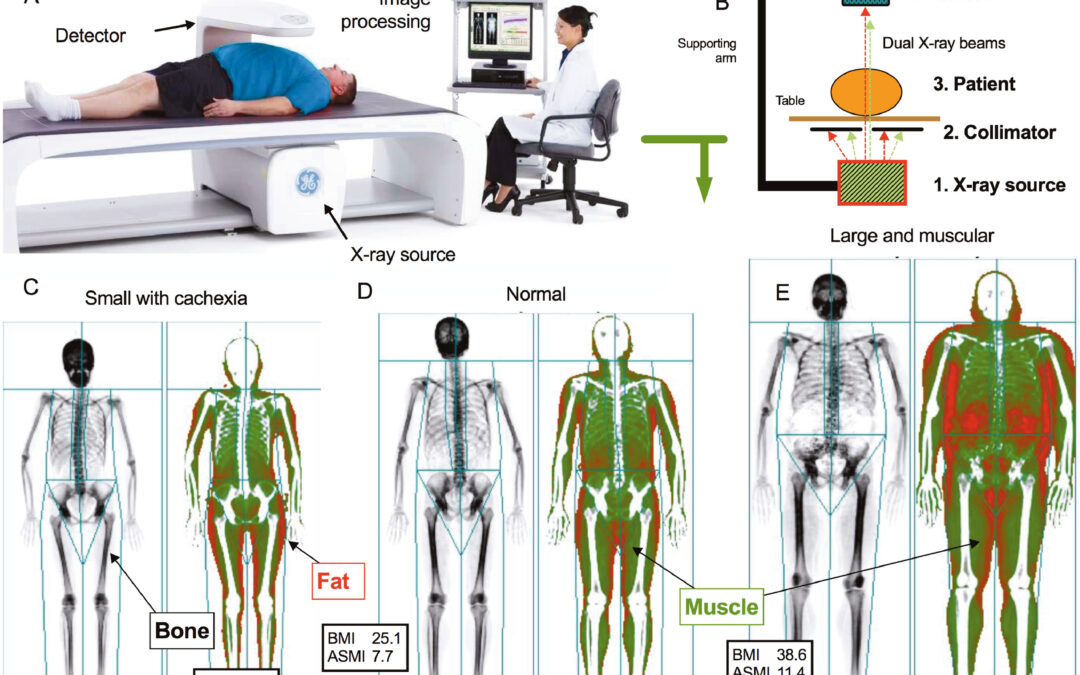Understanding Appendicular Lean Mass Index (ALMI)
As the world of health and fitness continues to evolve, so do the metrics and indexes used to measure and monitor our bodies. One such evolution is the Appendicular Lean Mass Index (ALMI). This article aims to provide an authoritative, professional, and comprehensive guide to understanding the ALMI, its importance, and its application in various fields of health science.
What is Appendicular Lean Mass Index (ALMI)?
The Appendicular Lean Mass Index, or ALMI, is a measure derived from the mass of lean muscle in the upper and lower extremities of the body. It’s calculated by summing the lean muscle mass of the arms and legs, measured in kilograms, and adjusting it for height, measured in meters squared (m^2).
Importance of Appendicular Lean Mass Index
ALMI is a critical tool for assessing muscle health, particularly in older adults and populations at risk of sarcopenia — a condition characterized by loss of muscle mass and function with age. Thus, by providing an objective measure of muscle mass, ALMI serves as an important indicator of overall body composition and physical health.
Appendicular Lean Mass Index and Body Composition
Body composition refers to the percentage of different types of tissues in our bodies, including fat, muscle, and bone. Dual X-ray Absorptiometry (DXA) is the gold standard for body composition assessment, enabling accurate measurement of each of these components.
With DXA, you can obtain a detailed printout of body composition data, including the ALMI. This information can be beneficial for tracking changes in muscle mass over time, especially for athletes, or for monitoring the risk of sarcopenia in older adults.
How to measure the Appendicular Lean Mass
The measurement of Appendicular Lean Mass (ALM) is typically done using various techniques. One common method is bioimpedance analysis, which measures the resistance of electrical currents as they pass through the body. Another widely used technique is dual-energy X-ray absorptiometry (DXA), which uses low-dose X-rays to measure bone density and body composition. A study evaluating the accuracy of bioelectrical impedance analysis (BIA) found that it slightly overestimated ALM compared to DXA measurements. However, equations incorporating factors like BMI, gender, and fat percentage can improve the accuracy of BIA measurements. These methods provide valuable insights into ALM and can help distinguish individuals at higher risk of poor outcomes, such as mortality or functional decline, especially among older adults and stroke patients.
Appendicular Lean Mass Index in Health and Fitness Assessment
In the realm of health and fitness, ALMI can offer valuable insights into an individual’s body composition. For example, athletes might use ALMI to track changes in their muscle mass over time or to compare their muscle mass to normative values for their sport. Such comparisons can provide an indication of whether an athlete’s muscle mass is appropriate for their sport or if they need to focus on building more muscle.
Appendicular Lean Mass Index and Aging
As people age, they naturally lose muscle mass. This loss is a significant factor in the development of frailty and functional impairment in older adults. ALMI serves as a crucial index in assessing this muscle loss and the associated risk of adverse health outcomes.
Appendicular Lean Mass Index and Mortality Risk
Studies have shown a significant association between ALMI and mortality risk among older adults. Higher ALMI values are associated with a lower risk of mortality. By distinguishing the risk of mortality among older adults, ALMI can help identify those at a higher risk of poor outcomes, prompting early intervention.
Appendicular Lean Mass Index and Sarcopenia
Sarcopenia is a condition characterized by the loss of muscle mass and function, often associated with aging. ALMI can help assess the risk of sarcopenia. Certain cut off values have been identified as risk factors for sarcopenia in men and women, making ALMI a valuable tool in the early diagnosis and management of sarcopenia.
Appendicular Lean Mass Index in Disease States
Apart from aging and fitness assessment, ALMI has applications in various disease states. For instance, cancer patients often experience muscle wasting, and ALMI can be used to track this loss and guide interventions. Similarly, ALMI can help assess the risk of metabolic diseases associated with obesity.
Appendicular Lean Mass Index and Exercise
Exercise, particularly resistance training, is known to increase muscle mass. Thus, tracking changes in ALMI can provide an objective measure of the effectiveness of exercise interventions.
The Future of Appendicular Lean Mass Index
As more research is conducted, the utility of ALMI in various fields of health and fitness is likely to continue to evolve. While it’s already a valuable tool for assessing body composition and predicting health outcomes, future research may uncover new applications for this index, making it an even more indispensable tool in the health and fitness toolbox.
Conclusion
The Appendicular Lean Mass Index provides an essential measure of muscle mass, offering valuable insights into an individual’s overall health and fitness. Whether you’re an athlete looking to optimize your performance, an older adult concerned about sarcopenia, or a health professional seeking to provide the best care for your patients, understanding and utilizing ALMI can be a game-changer.
Acknowledgments
The research and development of Appendicular Lean Mass Index have been supported by numerous institutions and scientists worldwide. Its application has greatly enhanced our understanding of body composition and its implications for health. As we continue to further explore its potential, we acknowledge the significant contributions made by all involved in bringing this valuable tool to life.











